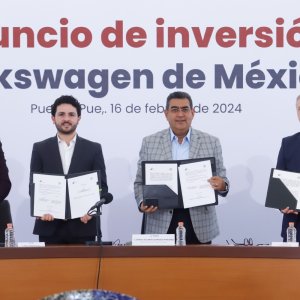
Five Months With a Positive Trade Balance
 By Alessa Flores | Senior Journalist and Industry Analyst -
Tue, 12/01/2020 - 13:10
By Alessa Flores | Senior Journalist and Industry Analyst -
Tue, 12/01/2020 - 13:10
Mexico has again achieved a trade surplus, based on INEGI figures, and maintained a positive trade balance for five months now. Mexico linked October’s US$6.2 billion trade surplus with the positive results from the preceding four months. "Mexico's fifth consecutive month with a surplus in trade exchange with foreign countries constitutes an unusual pattern in the historical record," Marcos Daniel Arias Novelo, Monex's Analyst, told La Jornada. This feat sets a historical commercial precedent. Moreover, from January to October 2020, Mexico reached a surplus of US$25.2 billion, according to INEGI.
Mexico's exports of goods increased by 2.9 percent in October, reaching US$41.9 billion and the highest level recorded since 1991, according to INEGI. The importance of increased exports lies in their impact on economic growth, productivity and employment. According to Harvard Scholar, "when a country exports those services and goods in which it has an advantage in production, higher profits from foreign sales of these goods and services attract productive resources (workers, investment, machinery and equipment and research). This reallocation of resources results in greater productivity of the economy as a whole and this in turn induces further economic growth."
However, Mexico's record-breaking exports may not entirely be positive. "Having a large balance in favor of foreign trade is not good news. There are four actors in the economy: households, businesses, government and the foreign sector. If the latter has a surplus, then the other three have a deficit. However, for many people this is not logical, as exporting is what has allowed certain countries to be very successful: Germany, Japan, Korea and now China," says Macario Schettino, Professor of the School of Government at Tecnológico de Monterrey, in an article for the Financiero.
Other studies show that there is a relationship between trade and the reduction of inequalities in a country. José Roberto Concha, Professor at Tulane University in the US, believes there is a relationship between exports and the welfare of a country's population, so "by increasing exports, there is a relief in the inequalities that a country suffers.” WTO believes that imports improve the competitiveness of companies and favor job creation, while exports allow companies to access wider markets. In some countries, the share of export-related national employment can reach 30 percent.
While increased exports are not the solution to Mexico's economic recovery, they are an important factor. Jesús López, Deputy Director of Economic Analysis at Banco Base, explains that "foreign trade is the indicator that will show the first signs of a real economic reactivation. However, for this to happen, it is necessary for Mexico’s northern neighbor to maintain the reopening of its productive sector," as 80 percent of Mexican exports go to the US.
Unfortunately, exports are not enough. Gabriela Siller, Director of Economic and Financial Analysis at Banco Base, believes that these are only one of the external factors that are alleviating the economic recovery. "Without that help from the foreign sector, Mexico's GDP could fall by as much as 14 percent," she said in an interview with Expansión.















